What is a Cesspit?
Managing wastewater is a crucial aspect of maintaining a safe and sanitary environment.
For properties not connected to a public sewer system, various methods are used to handle waste.
One of these methods is the use of a cesspit, but exactly what is a cesspit?
Though less common today, cesspits are still in use, particularly in rural or remote areas.
In this article, we’ll explore what a cesspit is, how it works, its benefits and drawbacks, and how it compares to other waste management systems like septic tanks.
Article Chapters
What is a Cesspit?
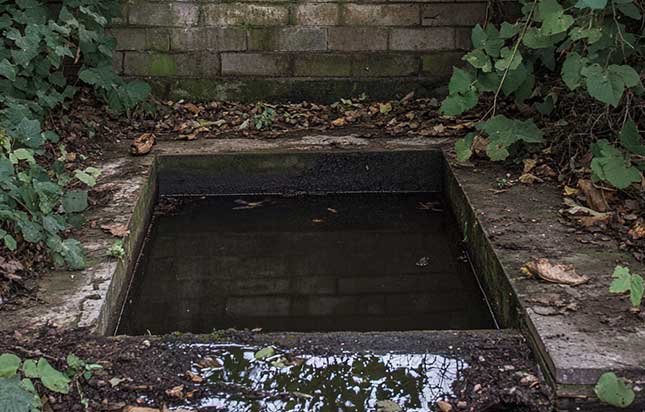
A cesspit, also known as a cesspool, is an underground tank used for storing wastewater and sewage from a property.
Unlike more advanced waste management systems, a cesspit does not treat the waste it collects.
Instead, it simply holds the waste until the tank is full and needs to be emptied by a professional waste disposal service.
Cesspits are typically constructed from durable materials like brick, concrete, or plastic and are sealed to prevent waste from leaking into the surrounding soil.
Wastewater from toilets, sinks, showers, and other household drains flows into the cesspit through underground pipes.
Historically, cesspits were a common solution for waste management before the advent of modern sewage systems.
Today, they are mainly used in rural or remote areas where connecting to a public sewer system is not feasible.
While cesspits are simple to install and can be a practical solution in certain situations, they require regular maintenance and can pose environmental risks if not properly managed.
How Does a Cesspit Work?
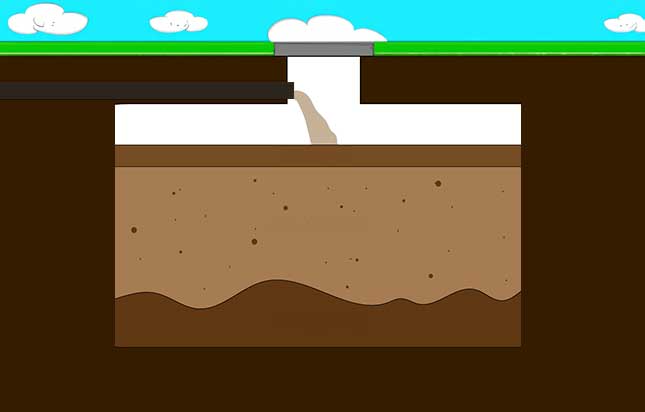
A cesspit works by collecting and storing all the wastewater and sewage from a property in an underground tank.
Once inside the cesspit, the waste simply accumulates over time.
Unlike septic tanks, cesspits do not treat or break down the waste. Instead, they serve as a holding area until the tank reaches capacity.
When the cesspit is full, it must be emptied by a professional waste disposal service.
This is done using specialised equipment, such as a vacuum truck, that pumps out the waste and transports it to a treatment facility.
Because cesspits are sealed, they prevent waste from seeping into the surrounding soil.
However, if not regularly maintained, cesspits can overflow or leak, causing environmental contamination.
The frequency of emptying depends on the size of the tank and the amount of wastewater produced by the household.
How is a Cesspit Different from a Septic Tank?
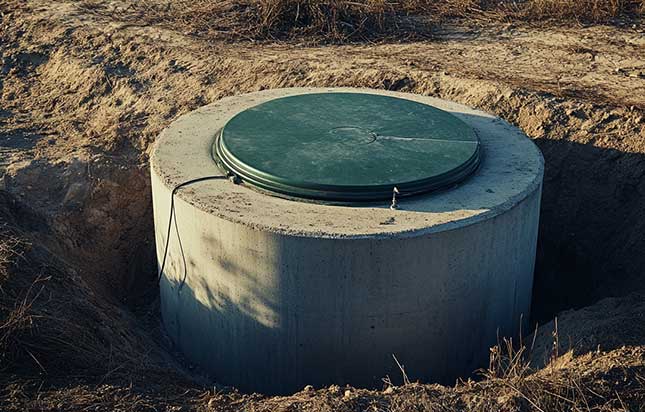
Cesspits and septic tanks are both systems used to manage wastewater in properties not connected to a public sewer system.
However, they function very differently and serve distinct purposes.
Waste Treatment
The primary difference between a cesspit and a septic tank is how they handle waste.
Cesspits
A cesspit is simply a storage tank that collects and holds all the wastewater and sewage from a property.
It does not treat or process the waste in any way.
When the cesspit is full, it must be emptied by a professional service, typically using a vacuum truck.
Septic Tanks
Septic tanks work differently to a cesspit.
A septic tank is a more advanced system that partially treats the wastewater.
It works by separating solid waste from liquid waste.
The solids settle at the bottom of the tank, forming sludge, while the liquid flows into a drainage field where it undergoes further natural filtration and treatment.
Bacteria in the septic tank help break down the organic matter, reducing the volume of solid waste.
Maintenance and Environmental Impact
Cesspits
Cesspits require frequent emptying because they simply store the waste without breaking it down.
This can make them more costly and labour-intensive to maintain.
Moreover, if a cesspit overflows or leaks, it can cause environmental contamination, including soil and groundwater pollution.
Septic Tanks
On the opposite side septic tanks require less frequent pumping, usually every 3 to 5 years, because the waste is partially treated and the liquid is dispersed into a drain field.
This makes septic tanks more environmentally friendly and efficient for long-term waste management.
Application and Suitability
Cesspits
Cesspits are often used in situations where soil conditions, high water tables, or space constraints make a drain field impractical.
Septic Tanks
Septic tanks are more commonly used in rural areas where a proper drainage field can be established, providing a more sustainable and less labour-intensive solution.
What are the Benefits to a Cesspit?
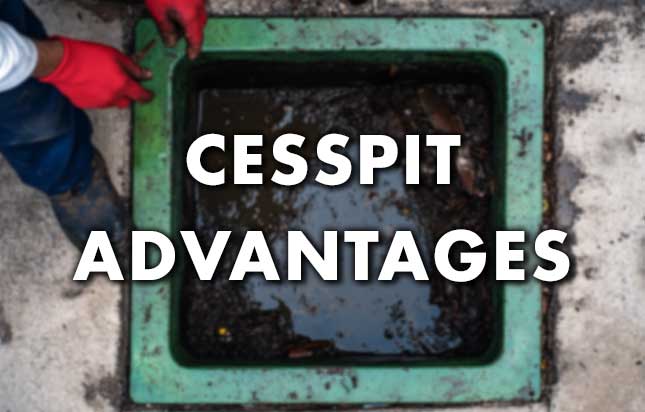
While cesspits may seem outdated compared to modern waste management systems, they do offer some benefits, particularly in certain situations.
Simple Installation
One of the main benefits of a cesspit is its straightforward installation process.
Unlike septic systems, which require the construction of a drain field for wastewater treatment, cesspits are simpler to set up.
They consist of a sealed underground tank that collects waste, making them a quicker and often less expensive option to install.
This can be particularly advantageous in areas where complex installations would be challenging or costly.
Suitable for Difficult Locations
Cesspits are ideal for locations where other waste management systems might not work.
In areas with poor soil conditions, high water tables, or limited space, installing a septic system with a drain field may be impractical.
Since cesspits don’t rely on soil for treating wastewater, they can be used in locations where a traditional septic system cannot be installed.
This makes them a viable option for properties in challenging environments.
No Need for a Drain Field
Unlike septic tanks, cesspits do not require a drain field to treat and disperse liquid waste.
This eliminates the need for additional land and complex excavation work.
For properties with limited space or where soil conditions do not support a drain field, cesspits offer a simpler alternative.
This also reduces the overall footprint of the waste management system on the property.
Temporary Solution
Cesspits can be an effective temporary solution for waste management.
They are often used in situations where a long-term system is not yet needed, such as at construction sites, temporary housing, or remote locations with seasonal use.
Their ease of installation and the ability to move or replace them makes cesspits suitable for short-term waste management needs.
Cost-Effective for Low Usage
For properties with low water usage, such as holiday homes or remote cabins, a cesspit can be a cost-effective solution.
Because these properties generate less wastewater, the cesspit will fill up more slowly, reducing the frequency of emptying and the associated costs.
This can make cesspits a practical and economical choice for managing waste in low-usage settings.
What are the Drawbacks to a Cesspit?

Despite their benefits, cesspits have several significant drawbacks that make them less desirable for long-term use, especially compared to more modern waste management systems.
Frequent Emptying
One of the most significant drawbacks of a cesspit is the need for frequent emptying.
Unlike septic tanks, which treat and partially break down waste, cesspits simply store all the wastewater and sewage from a property.
This means that once the tank is full, it must be emptied by a professional service.
Depending on the size of the cesspit and the amount of wastewater generated, this could be required every few weeks or months.
Frequent emptying can be inconvenient, time-consuming, and costly, especially in areas far from waste disposal services.
Environmental Risks
Cesspits can pose environmental risks if not properly maintained.
Since cesspits are sealed tanks that hold raw, untreated sewage, there is a risk of leaks or overflows if the tank is not emptied in a timely manner.
Such incidents can lead to contamination of the surrounding soil and groundwater, posing health hazards and environmental damage.
Additionally, if a cesspit is not constructed correctly or if it deteriorates over time, waste can seep into the surrounding area, leading to pollution and potential legal issues.
Bad Smells
Cesspits can produce unpleasant smells, particularly if they are not emptied regularly.
As the waste accumulates, it can begin to decompose, emitting foul smells that can be noticeable around the property.
This can be particularly problematic in warmer weather or if the cesspit is located near living areas.
The odours can make the surrounding environment uncomfortable, detracting from the quality of life for those living nearby.
Higher Long-Term Costs
While cesspits might be cheaper to install initially, the long-term costs can be higher compared to other waste management systems.
The ongoing expenses of frequent emptying, coupled with the potential need for repairs or maintenance, can add up over time.
For properties with high water usage, these costs can quickly become burdensome, making cesspits a less economical choice in the long run.
What are the Alternatives to a Cesspit or a Septic Tank?
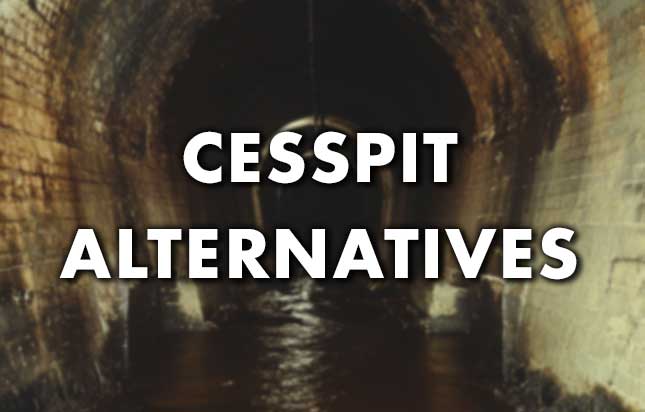
For homeowners considering alternatives to cesspits or septic tanks, there are several options available.
Each alternative has its own set of advantages and disadvantages, depending on the specific needs of the property and its location.
Mains Sewer Connection
The most straightforward alternative to a cesspit or septic tank is connecting the property to the mains sewer system.
In areas where this option is available, wastewater is directly sent to a sewage treatment plant, eliminating the need for on-site waste storage or treatment.
This is the most convenient and low-maintenance option, as it requires little intervention from the homeowner.
However, it can be costly to install and is not available in remote or rural areas.
Aerobic Treatment Units (ATUs)
Aerobic Treatment Units are an advanced alternative to septic systems.
Unlike septic tanks, which rely on anaerobic bacteria to break down waste, ATUs use oxygen to enhance the breakdown process.
This results in cleaner effluent, which can be safely discharged into the environment.
ATUs are suitable for properties with poor soil conditions or limited space for a drain field.
However, they are more expensive to install and maintain, requiring regular monitoring to ensure proper function.
Composting Toilets
Composting toilets offer a waterless alternative for managing human waste.
These systems convert waste into compost through aerobic decomposition, making them ideal for off-grid properties or areas with water scarcity.
Composting toilets are eco-friendly and reduce the need for sewage systems, but they are only suitable for toilet waste and require regular maintenance.
Holding Tanks
Holding tanks are similar to cesspits but are typically used for short-term waste storage, such as in RVs or boats.
They need to be emptied frequently, making them less suitable for permanent residences but useful for temporary or mobile situations.
Conclusion
You should now have gained more knowledge on exactly what is a cesspit and their uses.
They offer certain benefits, such as simple installation and suitability for challenging locations.
However, the drawbacks, including frequent emptying, potential environmental risks, and lack of waste treatment, make them less ideal for long-term use.
For homeowners seeking alternatives, options like septic tanks, aerobic treatment units, composting toilets, and connections to the mains sewer system offer more modern and efficient solutions.
Each option has its own set of pros and cons, and the best choice will depend on the specific needs and circumstances of the property.
Understanding the differences between these systems and carefully considering their benefits and drawbacks can help homeowners make
For more information get in contact with us here at KD Pumps.

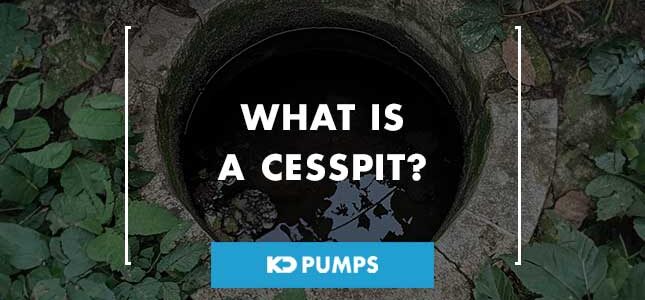
Comments are closed.